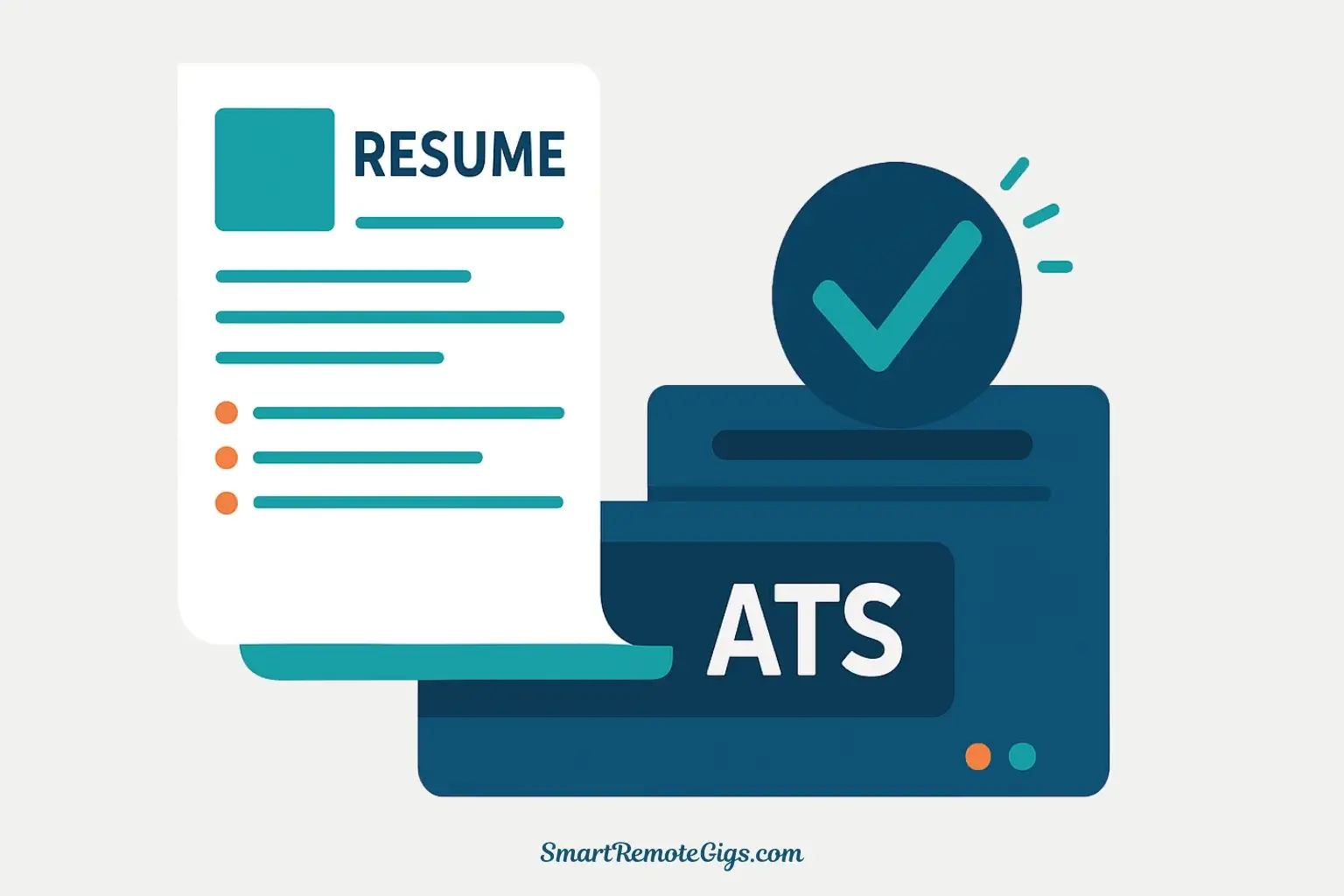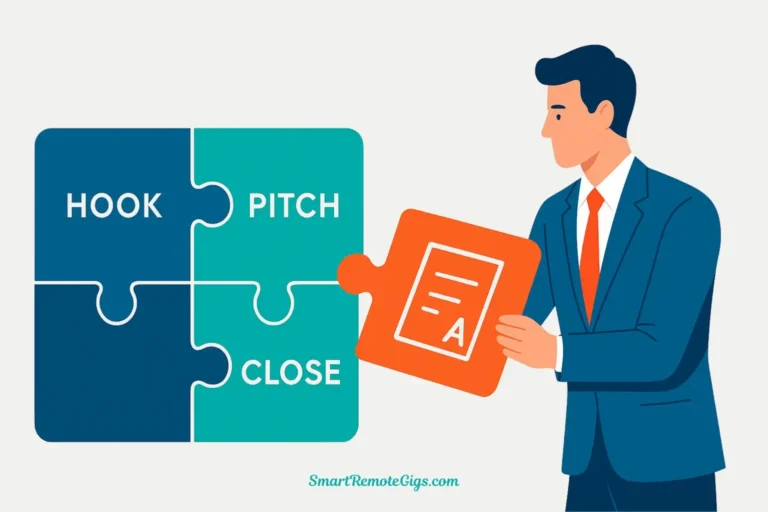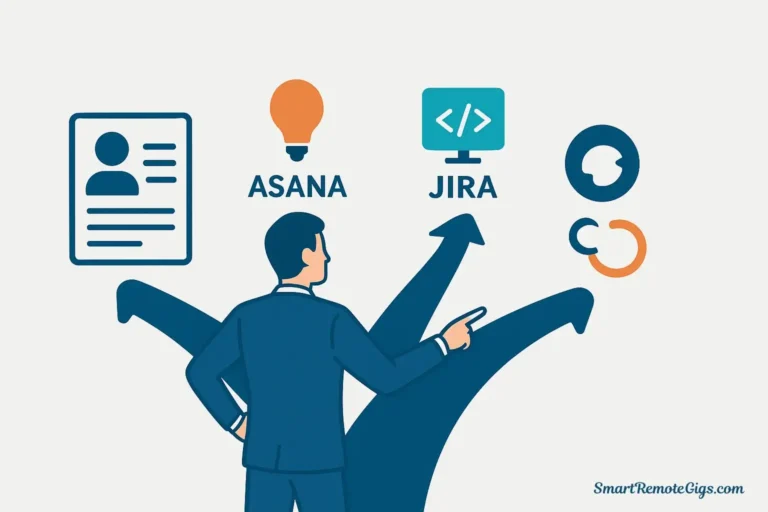Your resume has exactly 7.4 seconds to impress a human recruiter—but only if it survives the robot gatekeeper first. Applicant Tracking Systems (ATS) are software programs that scan, parse, and rank resumes before any human ever sees them. These systems filter out roughly 75% of applications by searching for specific keywords, proper formatting, and relevant qualifications.
For aspiring remote project managers, this creates a double challenge: your remote project manager resume must not only showcase your skills and experience but also speak the language that ATS algorithms understand. A beautifully designed resume with creative formatting might look impressive to you, but if it confuses the ATS parser, it will never reach a hiring manager’s desk.
This guide provides a proven, ATS-optimized template you can copy and customize, plus the strategic knowledge to tailor it for any remote PM position. Whether you’re crafting remote PM resume examples from scratch or refining an existing document, you’ll learn exactly how to structure each section for maximum impact with both bots and humans.
The Full Remote PM Resume Template (Copy & Paste)
Example of an ATS-Friendly Layout:
Below is a clean, single-column resume format that ATS systems can easily parse. Notice the clear section headers, simple bullet points, and absence of graphics or complex formatting. This structure ensures your qualifications reach human reviewers.
[YOUR FULL NAME]
[City, State] | [Phone Number] | [Email Address] | [LinkedIn URL]
PROFESSIONAL SUMMARY
Results-driven Project Manager with [X] years of experience leading cross-functional teams and delivering complex projects on time and within budget. Proven expertise in Agile methodologies, stakeholder management, and remote team coordination. Certified [PMP/CAPM/CSM] with a track record of improving project delivery speed by [X%] and reducing costs by $[X].
CORE COMPETENCIES
* Project Planning & Execution • Agile/Scrum/Kanban Methodologies
* Stakeholder Management • Risk Assessment & Mitigation
* Budget Management & Forecasting • Remote Team Leadership
* Process Improvement • Cross-Functional Collaboration
* Asynchronous Communication • Change Management
* Tools: Jira, Asana, Monday.com, Slack, Microsoft Teams, Confluence, Google Workspace
PROFESSIONAL EXPERIENCE
[Company Name] | [Location] (Remote) [Month Year] - Present
Project Manager
* Managed portfolio of [X] concurrent projects valued at $[X]M, delivering [X]% on time and [X]% under budget through effective resource allocation and risk management
* Led cross-functional team of [X] members across [X] time zones, implementing Agile ceremonies that improved sprint velocity by [X]%
* Reduced project delays by [X]% by creating standardized documentation templates and asynchronous communication protocols for distributed teams
* Facilitated stakeholder meetings with C-level executives, translating technical requirements into business outcomes and securing buy-in for [X] strategic initiatives
* Implemented [specific tool/process] that decreased project cycle time by [X] days and saved $[X]K annually
[Previous Company Name] | [Location] [Month Year] - [Month Year]
[Previous Title - can be related but not PM]
* [Achievement with quantified impact related to project coordination]
* [Achievement demonstrating leadership or team management]
* [Achievement showing process improvement or efficiency gains]
* [Achievement highlighting stakeholder communication or client management]
EDUCATION
[Degree Name], [Field of Study]
[University Name], [City, State] | Graduated [Year]
CERTIFICATIONS
* [Certification Name] - [Issuing Organization], [Year]
* [Certification Name] - [Issuing Organization], [Year]
ADDITIONAL INFORMATION
Languages: [If applicable]
Professional Affiliations: [Project Management Institute, etc.]
Volunteer Experience: [If relevant to PM skills]Section-by-Section Breakdown: How to Customize Your Template
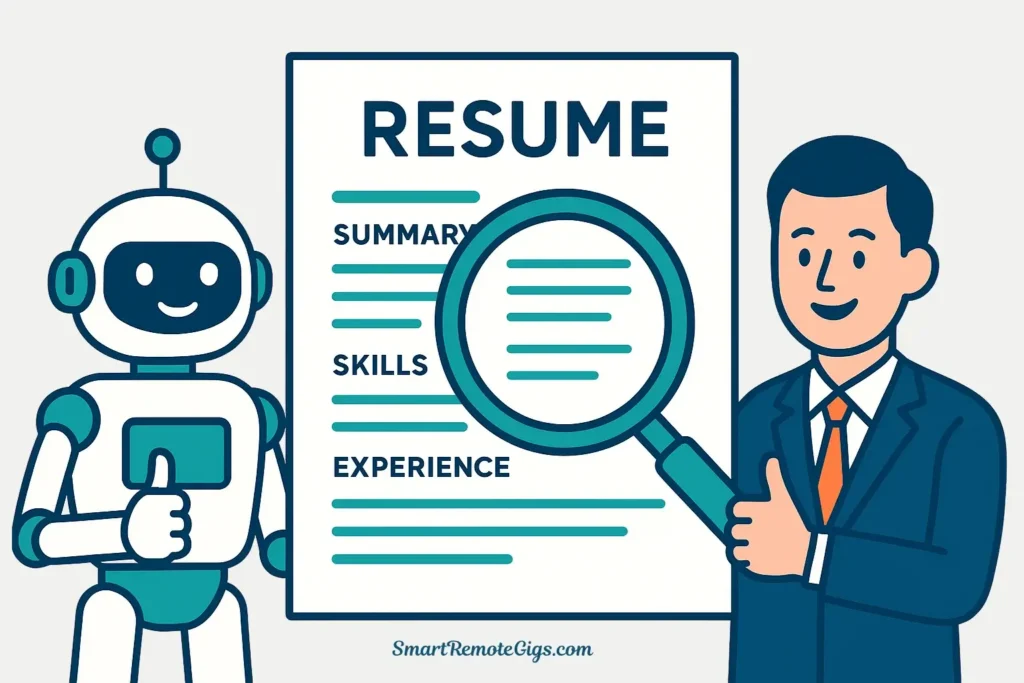
The Contact & LinkedIn Section
Keep your header simple and ATS-friendly. Include your full name, city and state (not full address—remote roles don’t need it), phone number, email, and LinkedIn URL. Skip graphics, photos, and colored headers that confuse parsing algorithms.
LinkedIn is non-negotiable for remote roles. Hiring managers expect to verify your professional presence, and a complete LinkedIn profile adds credibility. Ensure your LinkedIn headline and summary align with your resume’s positioning. If you’ve listed “Agile Project Manager” as your LinkedIn headline but your resume emphasizes traditional waterfall methodology, that inconsistency raises questions.
Use a professional email address—ideally [email protected]. Avoid outdated providers (AOL, Yahoo) that can inadvertently date you, and never use a current employer’s email address on a job application.
The Professional Summary: Your 3-Sentence Pitch
This 3-4 sentence section sits at the top of your resume and serves as your elevator pitch. It must accomplish three goals: establish your experience level, highlight your most relevant qualifications, and include critical keywords for ATS optimization.
Formula for success:
- Sentence 1: Years of experience + role title + high-level impact areas
- Sentence 2: Specific methodologies/skills + relevant certifications
- Sentence 3: Quantified achievement that demonstrates value
Example for a career changer with no PM title:
“Organized professional with 5 years of experience coordinating cross-functional initiatives and managing project lifecycles in fast-paced environments. Skilled in Agile methodologies, stakeholder communication, and remote team collaboration. CAPM-certified with demonstrated success improving team efficiency by 30% through process optimization and digital tool implementation.”
Notice how this example incorporates project manager resume skills keywords (stakeholder communication, Agile, remote team collaboration) while honestly representing someone who hasn’t held a formal PM title. It focuses on transferable competencies rather than job titles.
The professional summary is prime real estate for keyword optimization. Review the job description and naturally incorporate 3-5 critical terms that appear repeatedly. If the posting emphasizes “risk management” and “budget forecasting,” ensure those phrases appear in your summary.
The Skills Section: Keywords are King
The skills section is your ATS optimization powerhouse. Most ATS software scans this section specifically for required and preferred qualifications from the job posting. Structure it as a simple bulleted list or two-column format—never use graphics, charts, or skill rating bars that ATS can’t parse.
Divide your skills into three categories:
- Core PM Competencies: Project planning, stakeholder management, risk assessment, budget management, process improvement, change management
- Methodologies: Agile, Scrum, Kanban, Waterfall, Lean, Six Sigma (list only those you genuinely understand)
- Tools & Technology: Jira, Asana, Trello, Monday.com, Slack, Microsoft Teams, Confluence, Google Workspace, Microsoft Project
Be honest but strategic. If a job description lists “Jira” as required and you’ve used it for three months, include it—but be prepared to discuss your experience level in an interview. If you’ve never touched a tool, don’t list it. Misrepresenting your skills damages credibility and wastes everyone’s time.
Remote-specific skills matter. Include terms like “asynchronous communication,” “remote team leadership,” “distributed team coordination,” and “virtual collaboration.” These signal that you understand the unique challenges of remote project management and aren’t just treating it like office work done from home.
For maximum ATS optimization, mirror the exact phrasing from the job description when appropriate. If the posting says “Agile project management,” use that exact phrase rather than “Agile PM” or “Agile methodology.” ATS systems often search for specific keyword combinations.
The Experience Section: Quantify Everything!
This section determines whether you get an interview. Each bullet point should follow the CAR framework: Context, Action, Result.
Weak bullet point: “Managed projects for the marketing team”
Strong bullet point: “Managed portfolio of 5 concurrent marketing campaigns valued at $200K, delivering 100% on time and 15% under budget through effective resource allocation and vendor management”
The difference is specificity and quantification. Numbers prove impact and make your achievements memorable. Ask yourself: How many? How much? How often? By what percentage?
If you lack traditional PM experience, reframe previous roles through a PM lens:
- Did you coordinate between departments? That’s cross-functional team leadership
- Did you manage budgets or track spending? That’s budget management
- Did you create timelines or ensure deadlines were met? That’s project planning and execution
- Did you handle difficult clients or internal stakeholders? That’s stakeholder management
Example for a customer success manager transitioning to PM:
“Coordinated onboarding projects for 30+ enterprise clients, managing timelines across sales, technical, and support teams to achieve 95% on-time completion rate and 90% customer satisfaction score”
This reframes customer success work using PM language and metrics, demonstrating transferable skills without misrepresenting the role.
For remote-specific impact, emphasize asynchronous work, distributed team coordination, and digital communication. Include phrases like:
- “Led geographically distributed team across 4 time zones”
- “Implemented asynchronous standups that improved team productivity by 25%”
- “Created documentation systems that enabled 24/7 project progress for global teams”
These details signal you’ve already solved the challenges that worry hiring managers about remote PM roles.
Action verb variety matters. Start each bullet with a strong action verb, varying your choices: managed, led, facilitated, implemented, optimized, streamlined, coordinated, delivered, executed, analyzed, negotiated, established. This keeps your resume dynamic and engaging while hitting different keyword variations the ATS might seek.
Pro Tip: Tailoring Your Resume to a Job Description in 5 Minutes
Generic resumes get generic results. Top candidates customize their resume for each application, but this doesn’t require hours of work. Here’s the 5-minute tailoring process:
Step 1 (90 seconds): Read the job description and highlight 8-10 critical requirements and preferred qualifications. Look for repeated terms and skills mentioned in multiple places.
Step 2 (90 seconds): Scan your Professional Summary and Skills section. Add 2-3 highlighted keywords that you possess but didn’t include. Replace generic terms with the exact phrasing from the job description.
Step 3 (2 minutes): Review your Experience section. Reorder bullet points to put the most relevant achievements first. If the job emphasizes Agile experience, lead with your Agile accomplishments. If stakeholder management is critical, ensure that’s featured prominently.
Step 4 (30 seconds): Check your certifications and ensure they’re displayed clearly if the job mentions them.
This targeted approach dramatically improves your ATS score without rewriting your entire resume. You’re simply emphasizing the aspects of your experience that matter most for this specific role.
Bonus tool: Use Jobscan to analyze your resume against a job description. This ATS simulation tool shows exactly which keywords you’re missing and provides an optimization score. While not perfect, it’s a valuable data point that helps you understand how ATS systems evaluate your application.
Common Mistakes That Get Your Remote Resume Rejected
1. Creative formatting that breaks ATS parsing
Tables, text boxes, headers/footers, columns, graphics, and images all confuse ATS software. Stick to a single-column format with standard section headings. Use only basic bullet points (•) and avoid special characters or symbols.
Do This Instead: Use a simple, single-column layout with standard fonts (Arial, Calibri, Times New Roman) and clearly labeled section headings like “Professional Experience” and “Education.”
2. Listing responsibilities instead of achievements
“Responsible for managing projects” tells recruiters nothing. “Delivered 12 projects totaling $1.2M in value with 100% on-time completion” demonstrates impact. Every bullet point should show what you accomplished, not just what you were supposed to do.
Do This Instead: Start each bullet point with a strong action verb and include specific metrics: numbers, percentages, dollar amounts, or timeframes that prove your impact.
3. Keyword stuffing
While keywords matter, unnatural repetition hurts readability and credibility. “Agile project manager with Agile experience managing Agile projects using Agile methodologies” sounds robotic and desperate. Incorporate keywords naturally within context-rich accomplishments.
Do This Instead: Weave keywords into meaningful sentences that describe actual achievements: “Led Agile transformation that improved sprint velocity by 40% across three development teams.”
4. Vague or missing metrics
Phrases like “improved efficiency” or “increased productivity” are meaningless without numbers. By how much? Over what period? Compared to what baseline? Specific metrics make achievements credible and memorable.
Do This Instead: Quantify everything possible: team sizes, budget amounts, percentages of improvement, number of projects, cost savings, time reductions, or stakeholder satisfaction scores.
5. Ignoring remote-specific qualifications
When applying for remote positions, explicitly demonstrate remote work capability. If you’ve worked remotely before, mention it in your location line (e.g., “Remote” instead of just city/state). If you haven’t, emphasize skills that translate: asynchronous communication, self-motivation, digital collaboration tools, independent project delivery.
Do This Instead: Include phrases like “managed distributed teams across 3 time zones,” “implemented asynchronous communication protocols,” or “coordinated projects using Slack, Zoom, and Asana.”
6. Generic resumes for every application
Hiring managers can spot mass-applied resumes instantly. Even 5 minutes of customization shows you read the job description and understand the role’s priorities. This small effort significantly increases your callback rate.
Do This Instead: Spend 5 minutes matching keywords from the job description, reordering bullet points to emphasize relevant experience, and customizing your professional summary.
7. Typos and inconsistent formatting
Nothing undermines your attention-to-detail credentials faster than “experiance” or inconsistent date formatting. Use Grammarly or a similar tool, and have someone else proofread before submitting. For a project manager role where documentation and precision matter, errors are especially damaging.
Do This Instead: Proofread three times, use spell-check tools, ensure consistent date formats (Month Year – Month Year), and have a trusted friend review before submitting.
Frequently Asked Questions (FAQ)
Q: How long should a project manager resume be?
A: One page is ideal if you have less than 10 years of experience. Two pages is acceptable for senior PMs with extensive, relevant project histories. Never exceed two pages. Remote hiring managers review hundreds of applications—concise resumes that deliver high-impact information quickly perform best.
Q: Should I include a photo on my resume for a remote job?
A: No. In the US and many other countries, photos on resumes are discouraged as they can introduce unconscious bias. ATS systems also struggle to parse images, potentially causing your entire resume to be rejected. Let your skills and accomplishments speak for themselves. Save your professional photo for LinkedIn.
Q: How do I list projects on my resume if I’m a freelance PM?
A: Create a “Key Projects” or “Contract Project Management” section. For each project, list the client (or “Confidential Client” if under NDA), a brief project description (1 sentence), and 2-3 bullet points detailing your specific actions and quantified results. Format it like regular work experience but group it under a single freelance heading to show continuity.
Q: What if I don’t have metrics to quantify my achievements?
A: You have more numbers than you think. Consider: team size you coordinated, number of stakeholders you managed, project budget (even estimates), number of deliverables, timelines you met, tasks you tracked, meetings you facilitated, or percentage of successful outcomes. If truly no hard data exists, use directional language: “significantly reduced,” “substantially improved,” or “consistently exceeded” paired with specific examples.
Q: Should I include my GPA or graduation year?
A: Only include GPA if you graduated within the last 3 years AND it’s 3.5 or higher. Never include your graduation year if it’s more than 15 years ago—this can trigger age bias. Simply list your degree, major, and university. Your experience matters far more than when you earned your degree.
Q: How do I address employment gaps on my resume?
A: Brief gaps (3-6 months) don’t require explanation on your resume. For longer gaps, consider using years only instead of months (2022-2024 instead of March 2022 – June 2024). If you did anything productive during the gap—freelance work, professional development, caregiving, volunteer PM work—include it briefly. Address gaps confidently in your cover letter if they’re significant.
Your remote project manager resume is your ticket to interviews, but it’s just one piece of the job search puzzle. Pair your optimized resume with a compelling cover letter that tells your unique story—we cover the exact formula in our guide to The Perfect PM Cover Letter Formula. And if you’re still building your qualifications, our breakdown of Top 5 Remote PM Certifications will help you identify the credentials that matter most.
For the complete roadmap to landing your first remote PM position, including interview preparation and company research strategies, return to our comprehensive guide: Land Your First Remote PM Job in 2025: A Complete Guide.
Follow this step-by-step process to create a professional remote project manager resume that is optimized to pass automated Applicant Tracking Systems (ATS) and effectively showcase your skills and quantified achievements to human recruiters.
Total Time: 3 hours
Select a Simple, ATS-Friendly Format
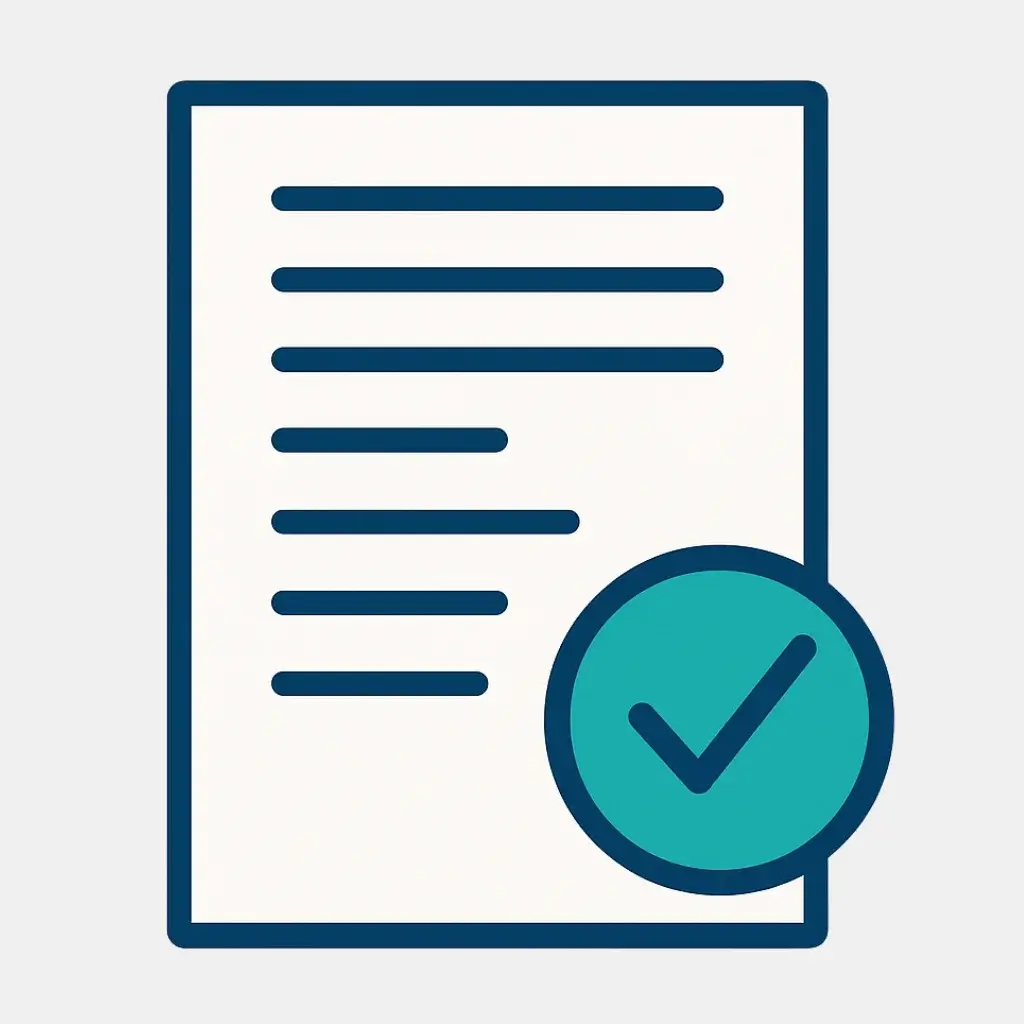
Start with a clean, single-column template. Avoid using tables, text boxes, graphics, photos, or complex formatting that can confuse ATS parsers. Use standard section headings like “Professional Experience” and “Skills.”
Craft a Keyword-Rich Professional Summary
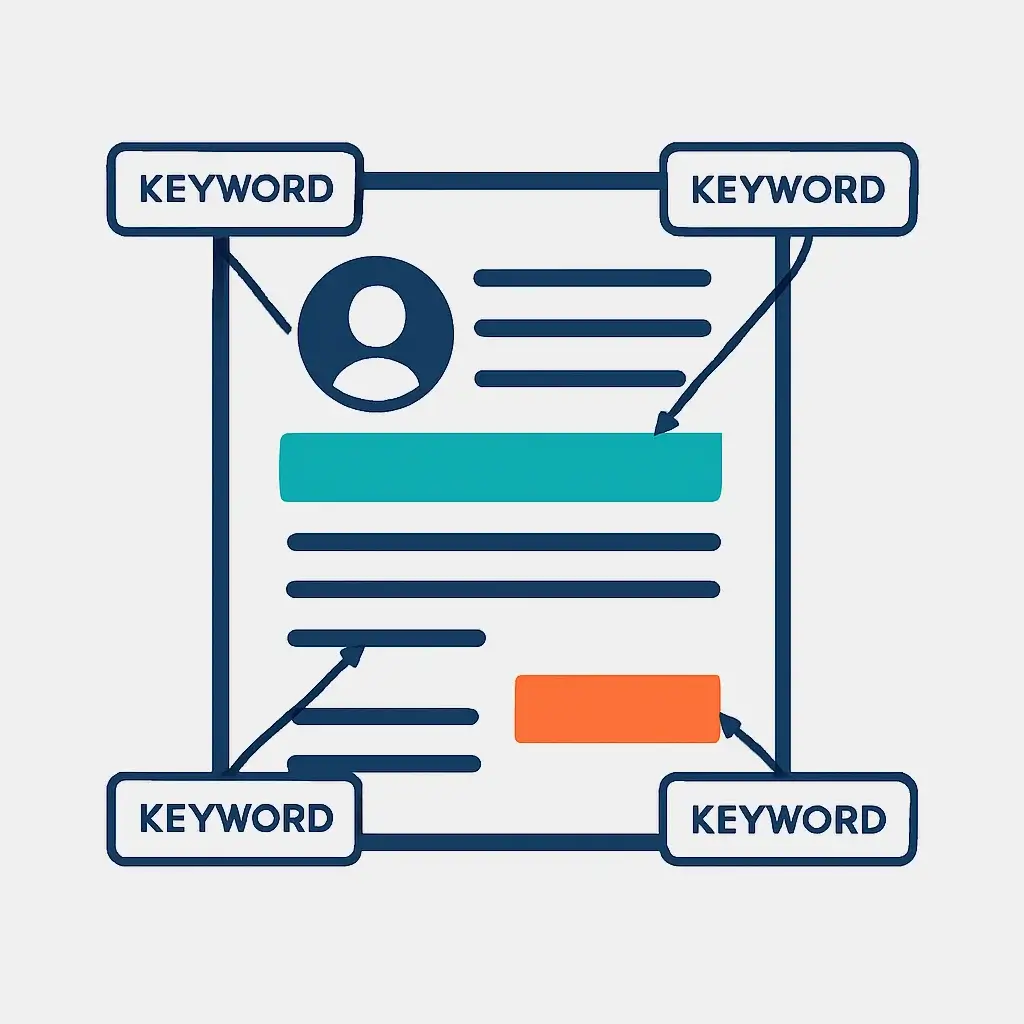
Write a 3-4 sentence summary at the top of your resume. Include your target title, years of experience, key methodologies (e.g., Agile), and at least one major quantified achievement. Incorporate 2-3 keywords directly from your target job description.
Build Your Core Competencies (Skills) Section

Create a bulleted list of your most relevant skills. Group them into categories such as “Methodologies,” “Core PM Competencies,” and “Tools.” Be sure to include remote-specific skills like “Asynchronous Communication” and “Remote Team Leadership.”
Write Achievement-Focused Experience Bullet Points

For each role in your professional experience, write bullet points that describe your accomplishments, not just your responsibilities. Quantify every achievement with metrics (numbers, percentages, dollar amounts) to demonstrate your impact.
Tailor and Proofread Before Every Submission
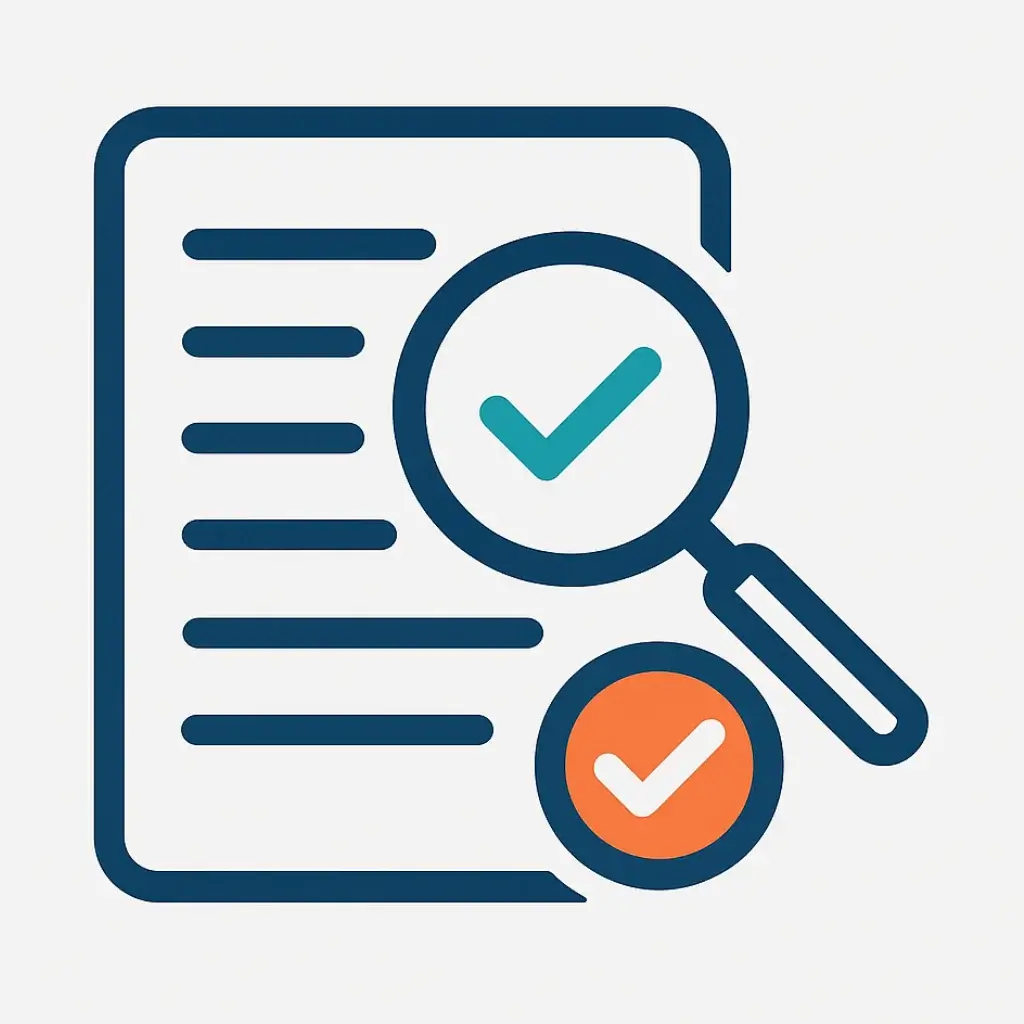
Spend 5 minutes customizing your resume for each job application. Adjust keywords in the summary and skills sections to match the job description, and reorder your experience bullet points to highlight the most relevant achievements. Finally, proofread the entire document for any typos or formatting errors.
Tools:
- Word processing software (Google Docs or Microsoft Word)
- A target job description
- Your professional LinkedIn profile
- Optional: A resume scanning tool (e.g., Jobscan)
- Optional: A grammar checker (e.g., Grammarly)
